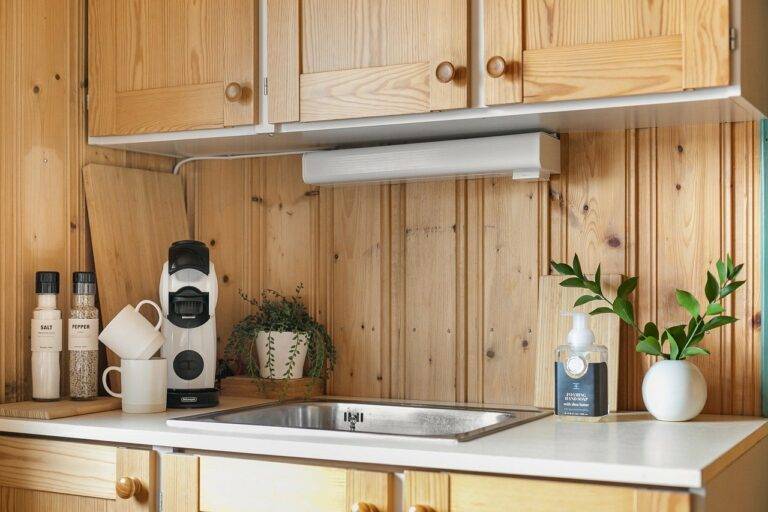The Benefits of Vertical Gardening in Urban Environments
Utilizing vertical gardening techniques can be a game-changer for those with limited outdoor space. By growing plants upwards instead of outwards, individuals are able to maximize their available square footage, making the most of even the smallest balconies, patios, or rooftops. This innovative approach allows for the cultivation of a variety of herbs, flowers, and even vegetables in a condensed area, providing urban dwellers with the opportunity to enjoy the beauty and benefits of a lush garden without sacrificing precious room.
Vertical gardening not only offers a practical solution for space constraints but also adds a touch of greenery to urban environments. The integration of vertical gardens along city walls, building facades, or fences not only beautifies the surroundings but also contributes to a healthier and more sustainable ecosystem. These living walls not only serve as pleasant aesthetic features but also serve as natural air purifiers, absorbing carbon dioxide and releasing oxygen into the atmosphere, thereby enhancing overall air quality in densely populated areas.
• Vertical gardening maximizes available square footage
• Allows for cultivation of herbs, flowers, and vegetables in a condensed area
• Ideal for small balconies, patios, or rooftops
Vertical gardens not only save space but also have numerous environmental benefits. By utilizing vertical space to grow plants, individuals can reduce their carbon footprint and contribute to a greener environment. The plants in vertical gardens help to cool the surrounding area by providing shade and releasing moisture through transpiration. This cooling effect can be especially beneficial in urban areas where temperatures tend to be higher due to the heat-absorbing properties of buildings and pavement.
• Reduces carbon footprint
• Provides shade and cools surrounding area
• Contributes to a greener environment
In addition to its space-saving capabilities and environmental advantages, vertical gardening is also incredibly versatile. With various options for plant selection, irrigation systems, and design styles, individuals can customize their vertical garden to suit their preferences and needs. Whether you’re interested in growing fresh produce for your kitchen or creating a vibrant floral display on your balcony, there are endless possibilities when it comes to vertical gardening.
• Versatile – customizable plant selection, irrigation systems, design styles
• Endless possibilities – from growing produce to creating floral displays
Overall,
vertical gardening offers a creative solution for maximizing outdoor space while adding beauty,
greenery,
and sustainability to urban environments.
Whether you’re an experienced gardener looking for a new challenge or someone with limited outdoor space hoping to bring some greenery into your life,
consider giving vertical gardening a try!
Increases Urban Greenery
Vertical gardening is a powerful tool in the quest to enhance urban greenery. By utilizing vertical spaces effectively, individuals and communities can introduce more plants and greenery into urban environments. This not only serves as an aesthetic improvement but also contributes to boosting the overall health of urban areas.
The integration of vertical gardens in urban settings brings numerous benefits, including the creation of urban oases that promote biodiversity and attract various pollinators. As these green spaces thrive, they provide essential habitats for wildlife and contribute to the conservation of urban flora and fauna. Additionally, the lush greenery resulting from vertical gardening initiatives helps combat the urban heat island effect by providing shade and cooling the surrounding environment.
Improves Air Quality
Vertical gardening not only enhances the aesthetic appeal of urban spaces but also plays a crucial role in improving air quality. By introducing greenery into concrete jungles, vertical gardens act as natural air purifiers, filtering out pollutants and releasing oxygen into the atmosphere. This process helps to combat the negative effects of air pollution on public health and creates a more sustainable environment for city dwellers.
The plants in vertical gardens absorb harmful gases such as carbon dioxide and volatile organic compounds, which are emitted from various sources like vehicles and factories. In turn, they release oxygen during photosynthesis, significantly improving the air quality in their surrounding areas. This green infrastructure not only beautifies urban settings but also contributes to the overall well-being of residents by providing clean and fresh air to breathe.
How does vertical gardening save space?
Vertical gardening allows you to grow plants upwards instead of outwards, making it perfect for small urban spaces where horizontal space is limited.
How does vertical gardening increase urban greenery?
By utilizing vertical structures such as walls and trellises, vertical gardening adds greenery to urban environments that may lack traditional garden space.
How does vertical gardening improve air quality?
Vertical gardening helps to filter and purify the air by absorbing pollutants and releasing oxygen, ultimately improving air quality in urban areas.







